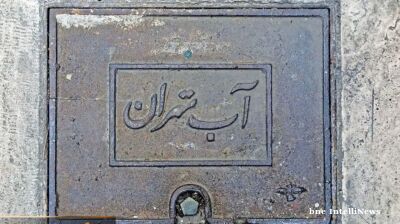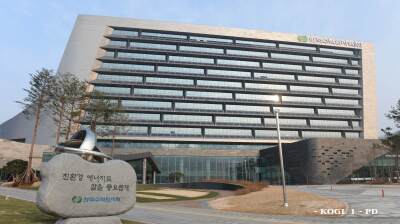Uzbekistan has overtaken Kazakhstan to become Central Asia’s leader in renewable energy. Heavy investment into a few mega projects means that power-hungry Uzbekistan now has about 2.6 GW of green energy capacity, ahead of Kazakhstan – the first country in Central Asia to invest into renewable power.
After its initial reluctance, the government in Tashkent has thrown itself into building a variety of wind and solar plants of increasingly large size.
“We have built the largest solar farm in Navoi, which was opened by Uzbekistan’s President Shavkat Mirziyoyev in 2022,” says Mohamed Jameel Al Ramahi, the CEO of the Middle Eastern power giant Masdar. “The government has supported us step by step to make sure the business is protected and conducted in an efficient way.”
Gas first
Uzbekistan was plunged into yet another energy crisis this winter as demand for power outstripped supply in the depth of a freezing winter.
Energy reforms have been a key part of Mirziyoyev strategy for a “New Uzbekistan” and green power is at the heart of those plans.
However, with the support of the EBRD the government began the programme by upgrading an old gas-burning heat and power plant in Tashkent to a high-efficiency gas power plant and has plans for a second one to provide the stable “base load” supply of power in any weather or at any time of day.
More recently, on May 9 Uzbek Energy Minister Jurabek Mirzamakhmudov announced a deal to buy Russian gas by reversing Soviet-era pipelines that used to take gas out of Central Asia to ensure reliable cheap supplies of gas for the country. Unlike its hydrocarbon-rich neighbours, Uzbekistan produces some gas, but not enough to meet its own needs. Russia will supply a reported 1.5bn cubic metres of gas a year – a mere 1% of what Russia used to sell to Europe – which will significantly improve the country’s energy security.
Renewables fervour
With the basics in place, the government is increasingly turning its attention to investing into green power. The initial target was to include 25% of renewable sources in the energy mix – a typical goal for many countries – but since then the government has become far more ambitious: the plan now is to add almost 2 GW of green power every year to reach 12 GW of green generating capacity by 2030, so green power will make up some 40% of the energy mix. The EBRD funded the construction of 1.5 GW of wind projects in 2022 alone, and there is at least that much again in the pipeline for 2023.
One of the first solar plants was Masdar’s 100-MW facility built in the city of Nukus in the Qizilqum (aka Kzyl-Kum) desert that is home to a small population as well as a famous art museum, known as the Louvre of the Steppe.
“Now we are building a 1.4-GW generating capacity wind farm,” Ramahi says, a ten-fold expansion in the capacity of Masdar’s previous plant.
ACWA Power is another global power company that is heavily committed to Uzbekistan. The company currently has five ongoing projects in the country, including four wind projects and a combined gas cycle turbine facility, making Uzbekistan the second-largest country of operation after its home market of the Kingdom of Saudi Arabia (KSA).
“There are big opportunities in Central Asia,” says Marco Arcelli, ACWA’s CEO. “The government didn't go straight to tenders but a mix of negotiation and tenders. That means a commitment to big scale, as the government has big ambitions. This approach has meant we come in not just as contractors but as partners.”
Thinly populated, but with plenty of sun, formally empty deserts could potentially become a green energy powerhouse.
“The conditions in the desert are ideal for renewables. The sun is hot. The desert is windy. There is plenty of land. And you have export markets to other Central Asian states and northern China not very far away,” says Nandita Parshad, the EBRD’s managing director for the sustainable infrastructure group.
The EBRD are also funding a solar plant near the ancient city of Samarkand that Parshad said will lead naturally to e-buses as part of the government strategy to go green and will add to the touristic appeal of the city.
“Uzbekistan is setting the model of how to make it work: set ambitious targets and show commitment to scale,” says Parshad.
ACWA Power is following up its bigger renewables projects with a pilot green hydrogen project – the first of its kind in Central Asia. While the output will be limited and the green hydrogen produced will be sold on the domestic market, the key issue with green hydrogen is it needs large amount of renewable energy to make it, and Uzbekistan’s deserts and underused Soviet-era gas pipelines means the whole operation could be vastly scaled up.
Problems with the grid
“The grid is a big challenge. We can’t ignore this,” says Ramahi. “Stability, reliability of the system is important, not just in Uzbekistan but in the whole region.”
The amount of generating capacity in Uzbekistan is growing quickly, but the main challenge remains modernising the aged power grid. Parshad says that last winter’s energy crisis had more to do with the inefficient grid than the lack of generating capacity.
Work on modernising the grid is still in its early stages. Some work has started on reintegrating the whole of Central Asia’s power grid, which was broken up into regional grids following the independence of the five Stans in 1991, but much work remains to be done on the national grids.
“There needs to be investment into transmission lines and the grid,” says Parshad. “Stabilising the electricity infrastructure is very important for the economy and we have brought in investors that have gone from nothing to doing gigawatt projects in just a few years. Now the plan is to invite investors and privatise other parts of the electricity system.”
Those plans are still at the stage of discussions and privatising the transmission grid is a much more politically complex problem. However, for the existing green projects the international contractors have already not only been building generating capacity, but also are installing the connections to the grid and then gifting these to the state to ensure their plants can be tapped for power as fast as possible.
bneGREEN

EXPLAINER: What is the EU’s CBAM and how will it affect global trade from 2026?
The European Union’s Carbon Border Adjustment Mechanism (CBAM) will enter its full operational phase on January 1, 2026, marking a major shift in global climate and trade policy.

Iran faces critical water crisis after driest year in five decades
Iran faces critical water crisis after driest year in five decades with 40% nationwide rainfall drop.

Global renewables to double by 2030, but IEA warns momentum must accelerate
Global renewable energy capacity is on course to double by 2030, reaching 4,600 GW—comparable to the current combined total of China, the European Union and Japan—according to the International Energy Agency’s Renewables 2025 report.

South Korea’s embrace of SMRs as a pillar of nuclear policy
Spearheaded by Korea Hydro & Nuclear Power, these compact reactors are increasingly being seen as central to the nation's energy policy, offering flexibility, scalability, and ultimately a pathway to carbon neutrality




